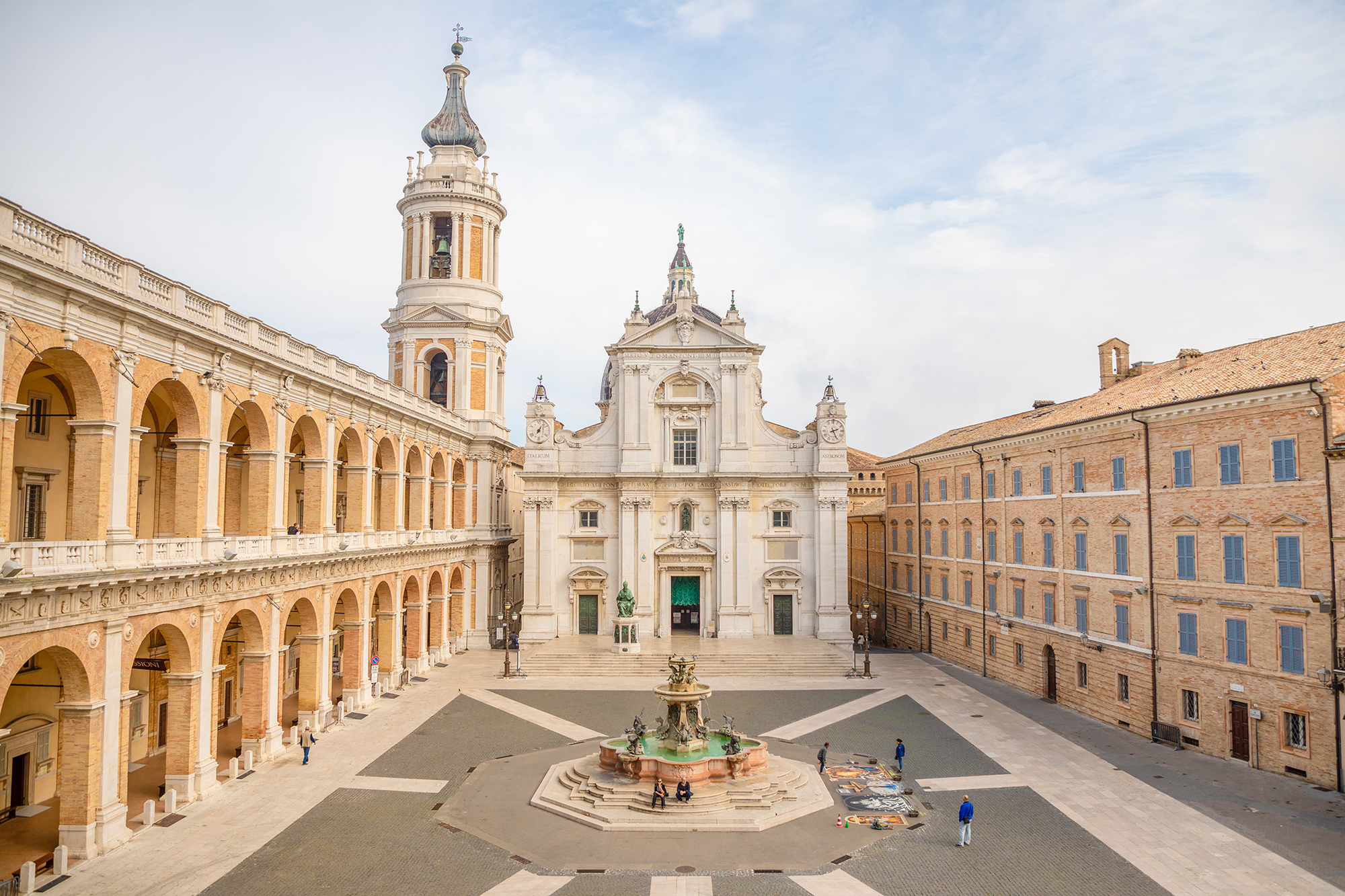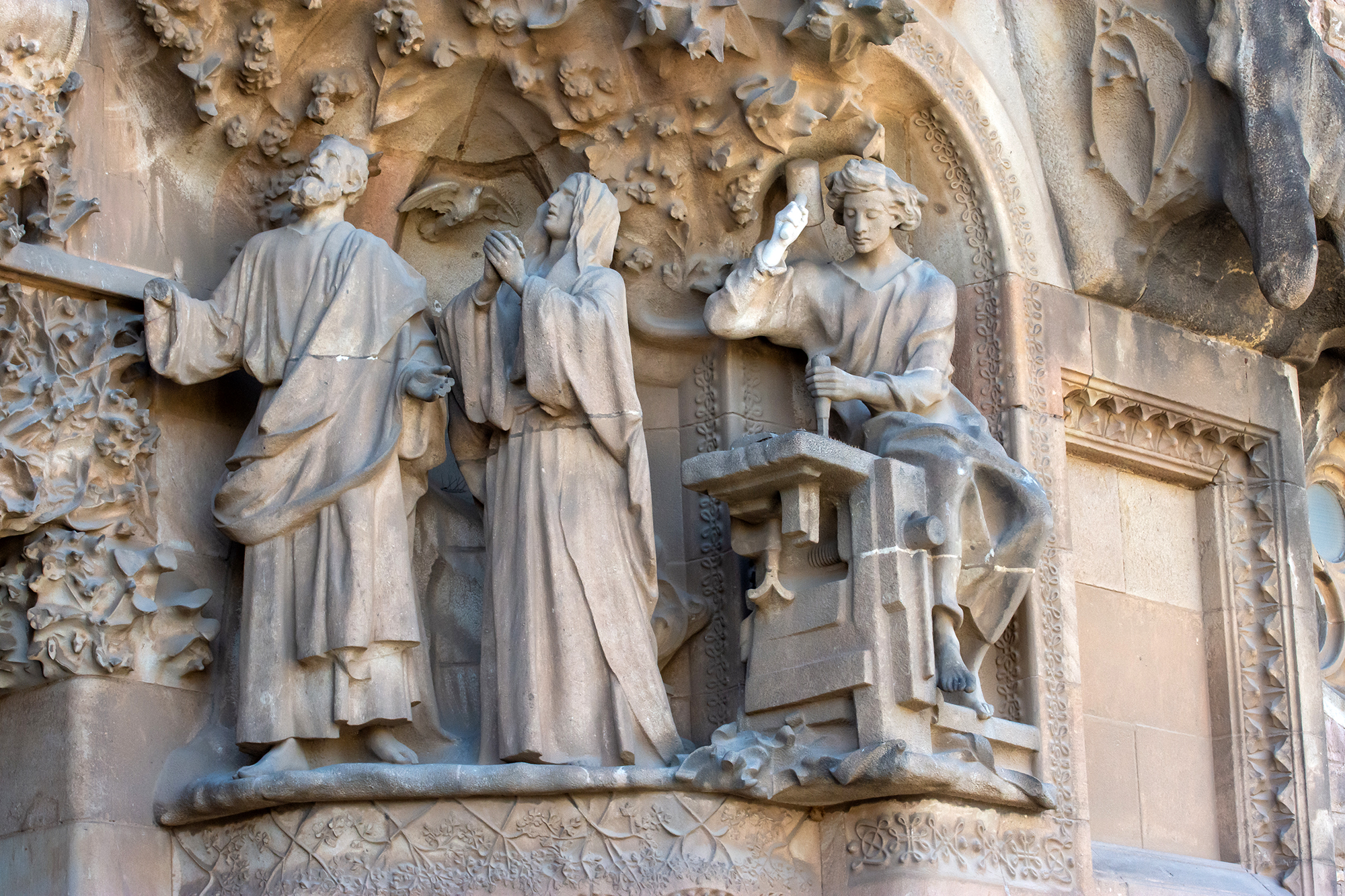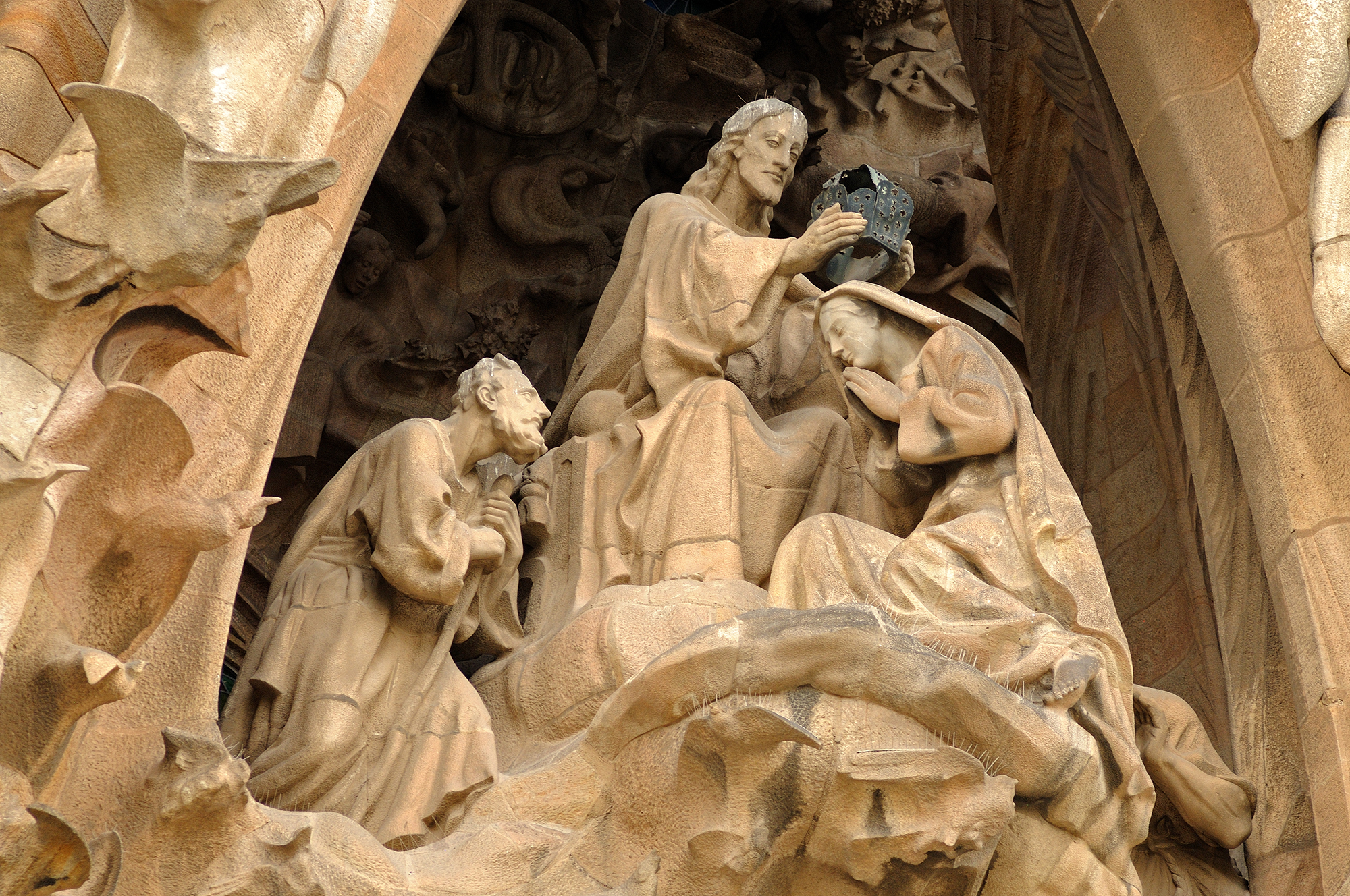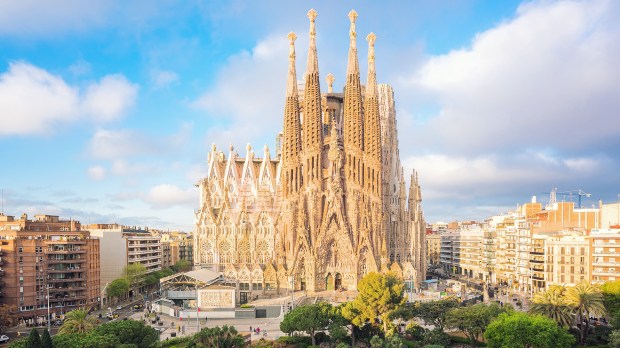Lenten Campaign 2025
This content is free of charge, as are all our articles.
Support us with a donation that is tax-deductible and enable us to continue to reach millions of readers.
This year marks the 150th anniversary of the declaration of St. Joseph as Patron of the Universal Church, signed by the Blessed Pius IX in 1870.
A few weeks ago, Pope Francis announced that starting from December 8, 2020, until December 8, 2021, it will be the year of St. Joseph. A key figure of Catholicism, the foster father of Jesus has inspired countless artists and architects across the centuries. Let us take you on a journey to discover the way St. Joseph inspired the construction and the fine details of one of the most legendary churches of the world: the Sagrada Familia (Holy Family) in Barcelona, Spain.
1. Construction started on the feast of St. Joseph
The first stone of the Sagrada Familia, a gigantic church measuring 564 feet, was intentionally laid on the day of the feast of St. Joseph in 1882. That’s because Josep Maria Bocabella, the founder of the church, had a strong devotion to the father of the Holy Family. A successful bookseller and a philanthropist, Bocabella was the President of the Spiritual Association of the Devotees of St. Joseph in Barcelona and had decided to build a church dedicated to the Holy Family after visiting the Sanctuary of the Holy House of Loreto in Italy.

2. A chapel dedicated to St. Joseph was one of the key milestones of the project
Initially, Bocabella had hired local architect Francisco de Paula del Villar y Lozano, but the project was soon taken over by young architect Antoni Gaudí, who changed the original plan from a “regular” Neo-Gothic church to the wondrous structure we know today. When Gaudí finished the central chapel, dedicated to St. Joseph, Bobabella issued a celebration, held on March 19, 1885.
3. The right portal of the façade is dedicated to St. Joseph
Gaudí divided the main façade, known as Nativity façade, into three main parts: the central part is dedicated to Jesus and the virtue of charity. The left portal celebrates “hope” and the Virgin Mary and the right one celebrates the virtue of faith and St. Joseph. You can spot a monogram of Joseph’s name on top of the majestic portal, made of a seven-pointed star with a “J” and topped with lilies. According to a tradition, Joseph is shown with a staff that blossoms like a lily.

4. A statue of St. Joseph was burned during the civil war
Between 1884 and 1885, Gaudí completed St. Joseph chapel and asked local sculptor Maximí Sala Sánchez to build a statue of St. Joseph. But in 1936 part of the chapel was burned during a battle of the brutal Spanish Civil War, including the statue of St. Joseph.
5. There are 10 representations of St. Joseph on the main façade
Gaudí dedicated one portal to the favorite saint of the founder of the Sagrada Familia. But there are representations of St. Joseph in the other two portals too, those dedicated to Jesus and the Virgin Mary respectively. He appears on the central portal, dedicated to Jesus, depicted as he witnesses the coronation of his wife, Mary, and on the left portal, featured in the Nativity scene next to Mary and the Christ child. The official architecture blog of the Sagrada Familia counts at least 10 representations of St. Joseph in the church founded by his devotees.


